To learn more about their overall creative vision and very unique approach, we recently interviewed our friends Matthew Rice and Matthias Roux over at Casimi Guitars in Cape Town, South Africa to discuss a range of topics including their design, voicing, building style, inspiration, and more. Please see below for the complete chat. Enjoy!
Click here to see some of these beauties in action: https://www.dreamguitars.com/shop/builders/casimi-guitars-.html

LW: It’s easy to say your guitars stand quite apart from the already distinctive crowd of modern guitars. What brought you to your particular aesthetic?
M&M: Thank you, it’s nice to think we have some originality in our approach. There are several reasons why we do things a little differently. Firstly, our whole aesthetic was developed in relative isolation from the mainstream of modern guitar design. It all started off as a fantasy of mine in a sketchbook one afternoon back in about 2003 (while I should probably have been doing something else). In those days I was pursuing a career as a musician and I had a day job working for a music instrument shop in Cape Town as their in-house guitar tech. I had a lot of instruments pass through my hands, pretty much the full gamut from the good through the bad to the ugly. One thought that kept plaguing me was what a wasted design opportunity the guitar often was. It’s got all the essential ingredients of a great design, but so often there is something missing or something that could have been done with more care and attention to detail. As a musician, artist, and jewelry designer, these aesthetic disappointments drove me to explore the guitar as a design question, which I did as a series of sketches and doodles in my lunch breaks and as a way of twiddling my thumbs. These drawings were an exploration of the form of the guitar from a sculptural perspective and were in line with my design philosophy as a whole.

I have always been fascinated with how the laws of physics produce lines and vectors which are inherently beautiful. How the natural world constantly produces designs which are breathtaking in their perfection and how these governing principles give rise to forms which are perfectly suited to their function. Elegant, alive, athletic, dynamic, efficient, and authentic. Expressing a kind of divine essence. I aspired to reach for this same lofty ideal in all my work. (“Beauty is truth and truth is beauty. That is all we know and all we need to know,” as Blake put it.) Years later I had the opportunity to build my own guitar with my longtime best friend Matthias Roux who was working for Maingard Guitars at the time. He and Colin Rock (another luthier at Maingard Guitars) decided to offer a guitar building course in the evenings. I jumped at the opportunity and brought along all my rather unorthodox sketches. We went through them together, weeding out the implausible ideas from the more realistic ones and after some hours we had a concept. That guitar was built as my personal instrument with no thought of marketing it to anyone else at all. It was simply my dream guitar, built with great love and a lot of help from two good friends. However, it became obvious that we were onto something special. The combination of my design fantasies and Matthias’s experience in building (at that point he had completed in the region of about 250 builds for Maingard) worked like a magic recipe. That same guitar became the prototype C2S and formed the basis for all our work as Casimi Guitars.
LW: Who are some of your favourite guitar players? Have you built instruments for any of them?
M&M: Well, for both of us, favourites make a very long and diverse list. On the acoustic side, Michael Hedges, Mike Dawes, John Gom, Pierre Bensusan, Michael Watts, Derek Gripper, Guy Buttery, Habib Koité, John Mclaughlin, Andy Mckee…the list goes on and on (We did in fact build a guitar for Guy Buttery very early on). On the electric side, Mark Knopfler, David Gilmore, Jeff Beck, Jimmy Page, Tom Morello, Ali Farka Touré, John Mayer, Jimmy Hendrix of course…so many! And we discover more all the time. Matthias has a strong background in Flamenco and therefore also followed players such as Paco de Lucia and Vincente Amigo. Between the two of us, I would say the spectrum is best described as immense and spans players and genres from Flamenco through Metal, Jazz, Ambient, Rock, African, Folk, Blues and many more.

LW: You utilize several design features that we haven’t seen before, your bridge setup for one. Can you walk us through your process in designing some of your more arcane features?
M&M: Yes, indeed! If we take the bridge as a good example, my starting point in designing that was the same as for everything else. To remove everything non essential and to try to make it beautiful along the way. Specifically with the bridge, I wanted to get rid of bridge pins. Personally I can’t stand the things! Any gigging guitarist knows that awkward silence when you have to replace a string mid show. Once you’ve run out of stories and you’re still using your pocket knife to dig out that little pin that just won’t quit.. by the time you’ve got the new string on and are tuned up, half the audience is either asleep or sneaking out the door…Not great. So I wanted a pinless bridge, but one that still retained the advantages of having the strings attached under the bridge plate. Ordinarily a pin-less system means the string is only attached to the bridge. One big advantage of the pinned bridge is that the string goes through the sound board and pulls from underneath the bridge plate. This means it’s not pulling your bridge off, but is pulling from underneath your bridge. This also gives a better break angle and therefore energy transfer to the soundboard. In order to rid ourselves of pins, we needed a system that would allow us to insert the string and keep it in place using its own tension. This we achieved with a kind of modified keyhole design, but then we needed to cover the key holes so as to maintain proper air pressure inside the soundbox. We went round the garden several times with this. All manner of mechanisms were explored from sliding drawers to swivelling lids until we hit on the idea of using magnets to hold down a cap that would cover our keyhole system. The aesthetic of the bridge is also largely functional. Yes, its shape is supposed to please the eye, but it derives from several functional considerations. Firstly we wanted the back of the bridge to reflect the curve of the tail of the guitar. Something we always see with classical guitars is that, over time, the square bridge pulling on the rounded tail results in some rather unhappy looking corrugations between the bridge and lower soundboard. By making the back of the bridge rounded (parallel to the tail), we have spread the stress out more evenly across the lower portion of the soundboard resulting in a more even pressure load. This is a good thing for structural longevity, but arguably also for tonal transfer from string through bridge to soundboard and braces. The hollows are there to facilitate easy finger access to the magnetic bridge cap and they also cut down on weight and bring the bridge within the 30 to 34g ideal weight for our recipe.

The same thinking went into the hollow headstock. It’s really a traditional slotted headstock with the non essential middle spar removed. Since its reinforced from the inside with carbon fibre rods and is sandwiched between two hardwood veneers back and front, it’s well strong enough to remove the extra material in the middle. The machine heads are simply a set of Gotoh 510s fitted sideways. This also, was partially an attempt to create easier access for restringing, but we liked the elegant quirkiness of the look.
LW: Please describe your goals in voicing an instrument. How did you first find your voice, and how do you continue to experiment?
M&M: To put it in a nutshell, one of the first builds to carry the Casimi name was an African Blackwood and Engelman spruce C2S. This guitar was built using a traditional Martin X brace and two tone bars just like what we were used to from Maingard. There were one or two modifications that had taken place since the prototype, but essentially it was one of those magical instruments that just bursts with life, tone, power projection, and all the qualities one is looking for and it’s hard to nail down exactly why. It was a monster straight off the bench. It was built as a shop guitar and for exhibition, so it hung around our workshop for two or three years and we really got to know it. It was really quite close to the voice we were always chasing, and it has been the voice of that guitar that we tried to emulate thereafter. Eventually we decided to experiment by adding a soundport and were able to notice the immediate way in which it tidied up the basses and brought the secondary harmonics into a happier alignment. In around 2014 we decided to experiment with some other bracing patterns. There were some crazy moments with U turns at the last moment. Matthias had an idea he wanted to do using a kind of fan bracing on a steel stringed guitar. I turned around one day and found him putting that top through the drum sander to remove them all after he’d spent a few days carefully shaping and listening. After extensive research and much hard thinking we decided to try a lattice brace pattern. An amazing friend of ours who was an industrial designer helped us to research and develop the jigs and patterns necessary to achieve this. Once we had built a guitar with this new system, we noticed immediately how it brought out the midrange of the instrument. This was the missing piece we had been looking for! Most guitars with the Martin pattern seem to have a kind of scoop in the mids. The lattice really seemed to do a little of the opposite. Suddenly we were hearing thick creamy mids, and it was amazing what an emotional quality came through in the chords. I suspect it has something to do with bringing the voice of the guitar closer to the tonal range of a human voice, so it conveyed this human emotional quality much more. Since then, we have used the lattice as our exclusive bracing pattern. It slowly evolved from build to build and we kept track of these minor adjustments along the way so as to track what differences they made. We’ve managed to reach a tone we like, but there is always more to learn and improve. It’s a constant process.

LW: Where do you think your building style will take you in the next five years?
M&M: That’s an interesting question. Much of the challenge at present is to find ways of making more of these crazy guitars more quickly without compromising quality. Simply put, a Casimi takes two experienced luthiers around 2.5 months to produce. We’d like to be in a position to be putting out about ten per year and I think that’s possible in around two to five years. So there probably won’t be any radical changes in aesthetic or tone during that period. Most of the evolution will occur behind the scenes, refining our production.
LW: Any interesting facts about your technique or shop arrangement that you’d like to share?
M&M: It’s a pretty standard setup. I guess that might be the most interesting part about it. I think some people look at our work and think it was produced in a very high tech dust free lab, but it’s really just a simple old workshop. We like things to be efficient and clean, but we also like our workspace to be a little bit homely and friendly.

LW: Working as a team also sets you apart from many one person operations. What is your working dynamic in the shop?
M&M: We’ve been best friends, since we were little kids so we know each other extremely well. It’s a pretty seamless partnership. We’ve both got our niches and processes that we have gravitated towards, so it dovetails very nicely. The most obvious advantage is that we have our various areas of expertise. It just so happens that these are perfectly aligned and two brains are better than one. It also spreads the workload somewhat. Of course there’s also the moral support and camaraderie that makes it all the more fun!
LW: What do you each enjoy doing outside of building instruments?

M&M: The work doesn’t really ever stop but, Matthias loves playing guitars, and cooking, and soccer with his son Surena. I divide my spare time between family, Systema (Russian Martial Arts), music, and art.
LW: If you had not become guitar makers, where do you think life would have led you?
Matthias: Possibly Cheffing, but he’s always been pretty single minded. He went straight out of high school into an apprenticeship at Maingard Guitars and never looked back. That’s an interesting question for me though…I could have seen myself as a musician, artist, industrial and jewellery designer, pilot, actor, film maker, screenwriter, martial arts instructor or journalist. Pretty wide spectrum, really.
LW: What music are you listening to right now?
M&M: For both of us, I guess all the artists listed already. Currently in my most listened list are Roger Waters, Amused to Death, Sona Jobarteh, The Police, Derek Gripper, Nils Petter Molvaer, Arvo Pärt and Massive Attack, and we are both constantly whistling Michael Watt’s tunes.
LW: Okay, heaven forbid the shop is burning down. You can grab only one tool as you get out of there. What is the tool?
M&M: The first thing that comes to mind is our precious wood stash! And our all our templates!..and Japanese chisels…and our Lee Nielsen Planes…Are you sure we can only grab one?








































































































































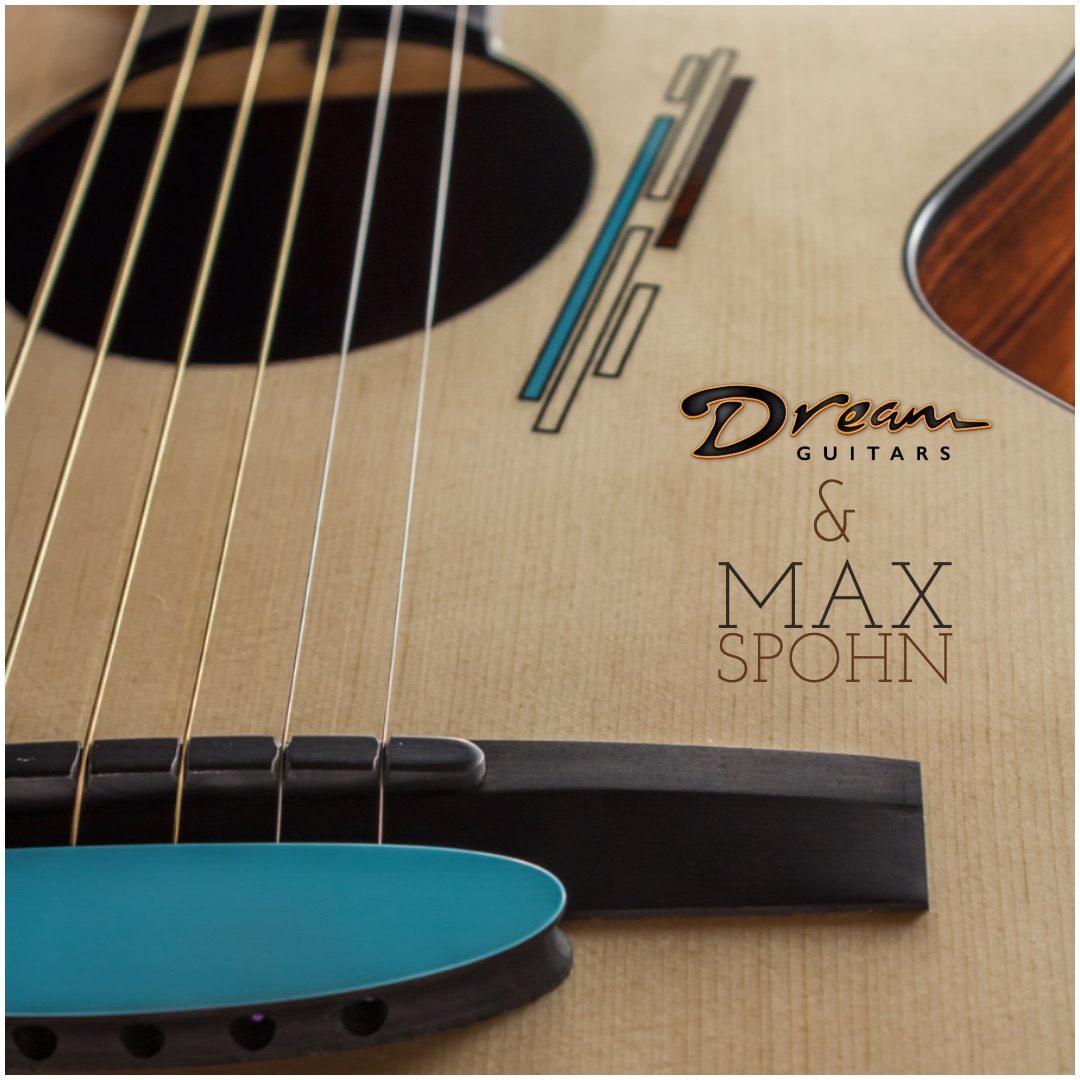






























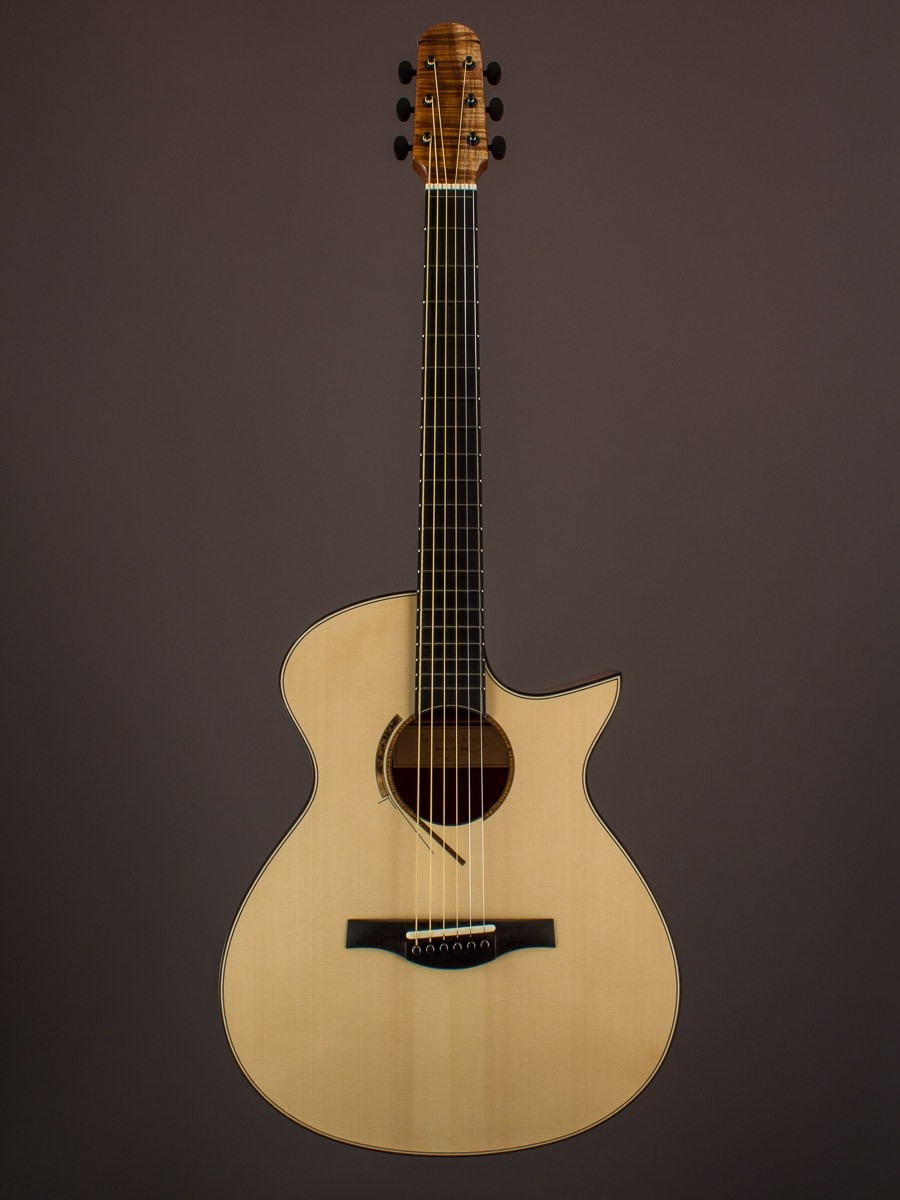



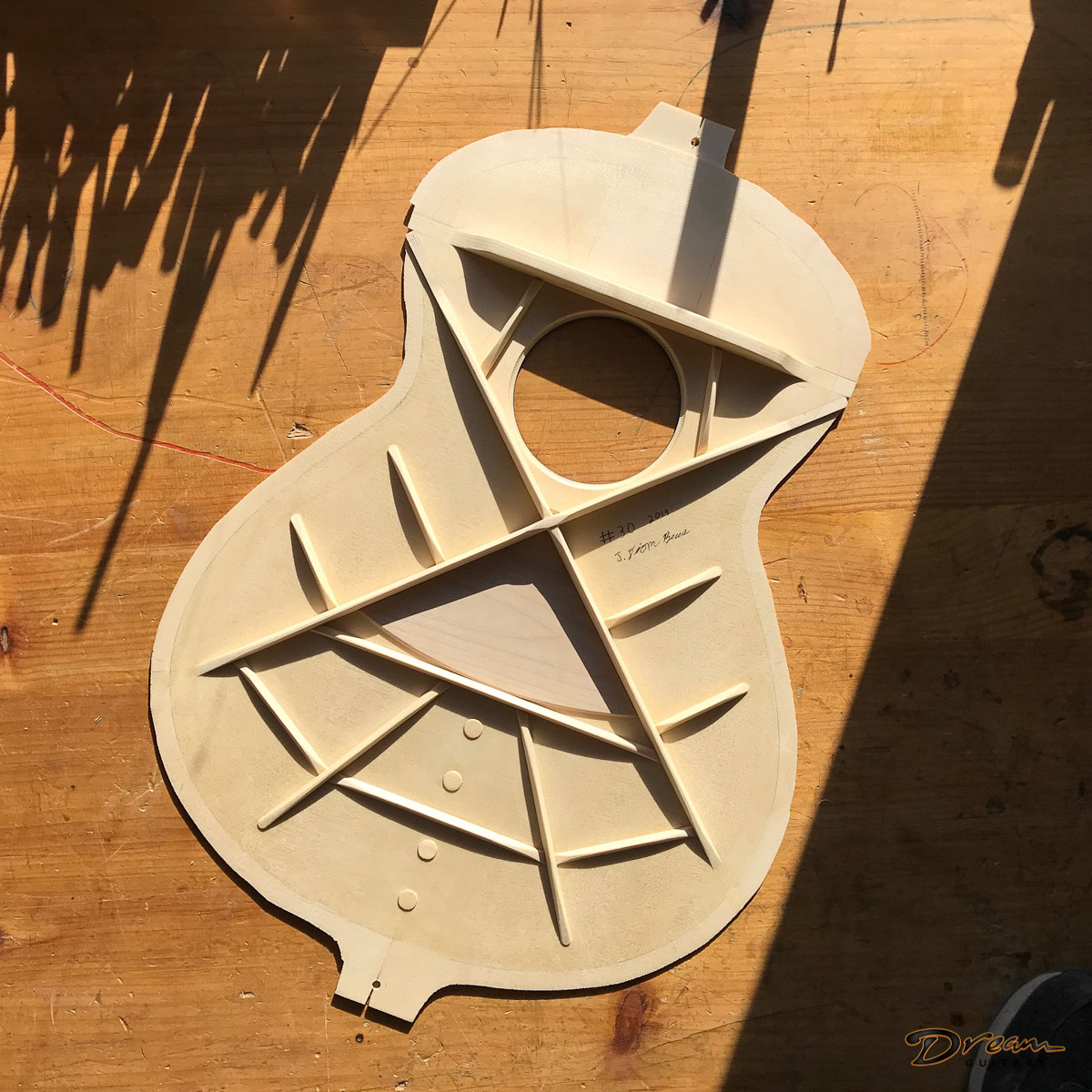









































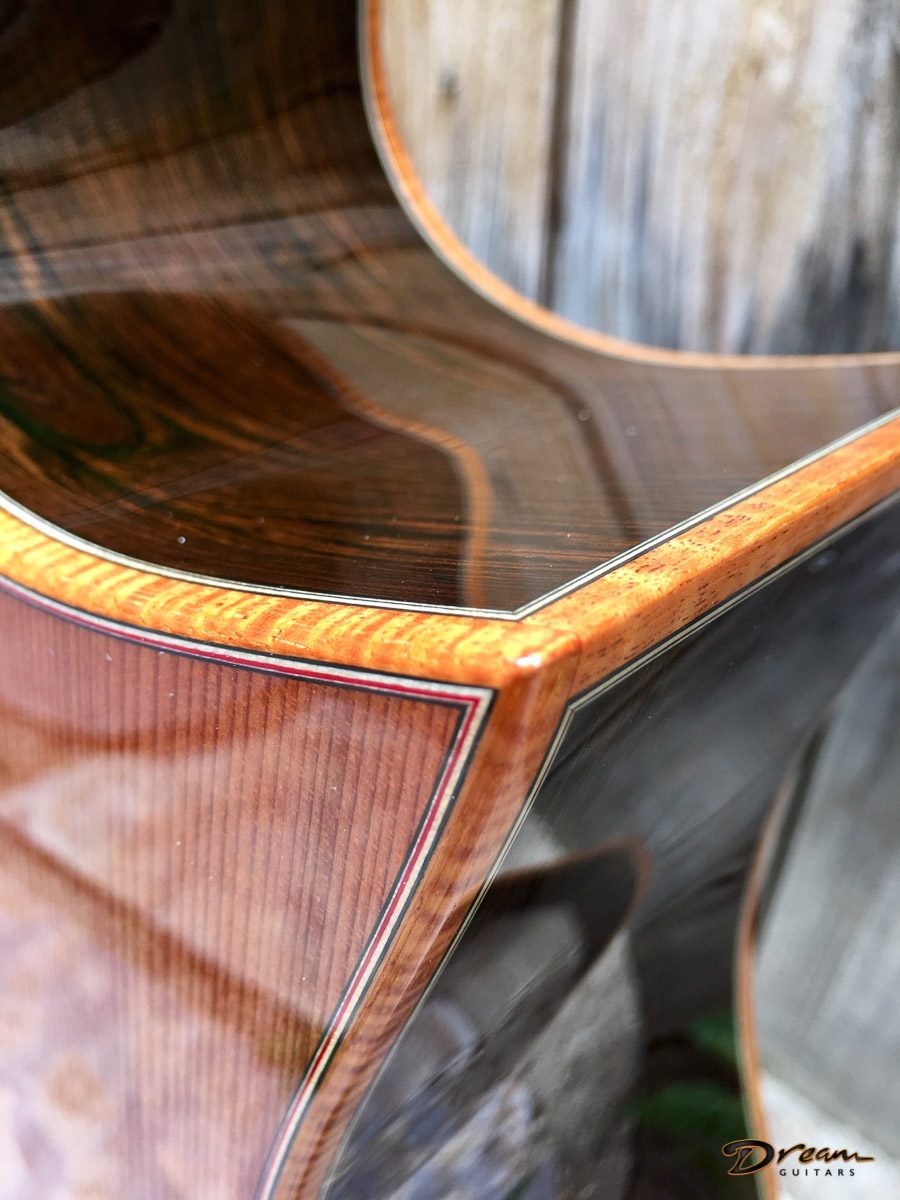


























 LW: I’d like to start with an obvious question. Why guitars? What first drew you to build these instruments?
LW: I’d like to start with an obvious question. Why guitars? What first drew you to build these instruments?

 At heart I’m a singer-songwriter fan and I’ve had the privilege of building guitars for some of my modern heros. Barton Carroll is one of the best songwriters out there and quite the guitar player to boot (listen to his song “Every Little Bit Hurts” if you want prime examples of both)! I was also able to deliver a guitar to Al James whose knockout songwriting was the driving force behind his band Dolorean for many years. The band broke up a few years ago, but I selfishly hope that a new guitar might inspire some new recordings in the future!
At heart I’m a singer-songwriter fan and I’ve had the privilege of building guitars for some of my modern heros. Barton Carroll is one of the best songwriters out there and quite the guitar player to boot (listen to his song “Every Little Bit Hurts” if you want prime examples of both)! I was also able to deliver a guitar to Al James whose knockout songwriting was the driving force behind his band Dolorean for many years. The band broke up a few years ago, but I selfishly hope that a new guitar might inspire some new recordings in the future!






















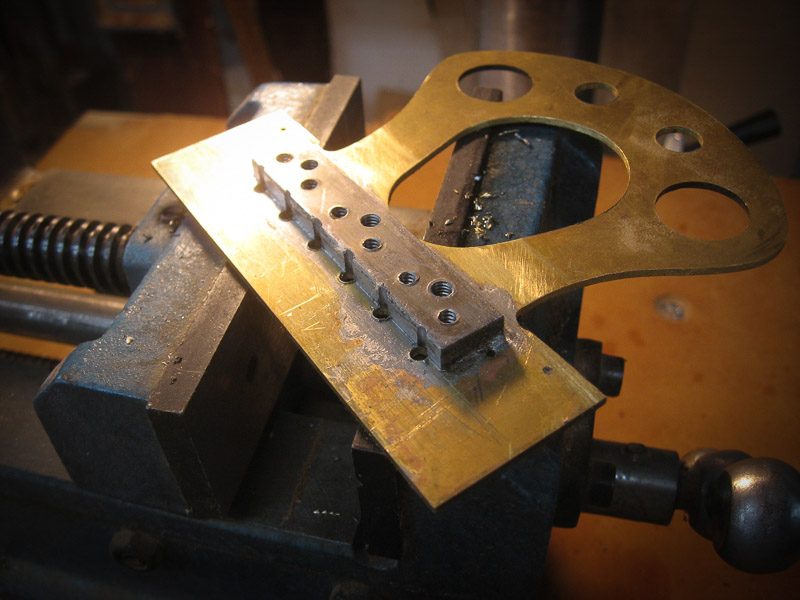

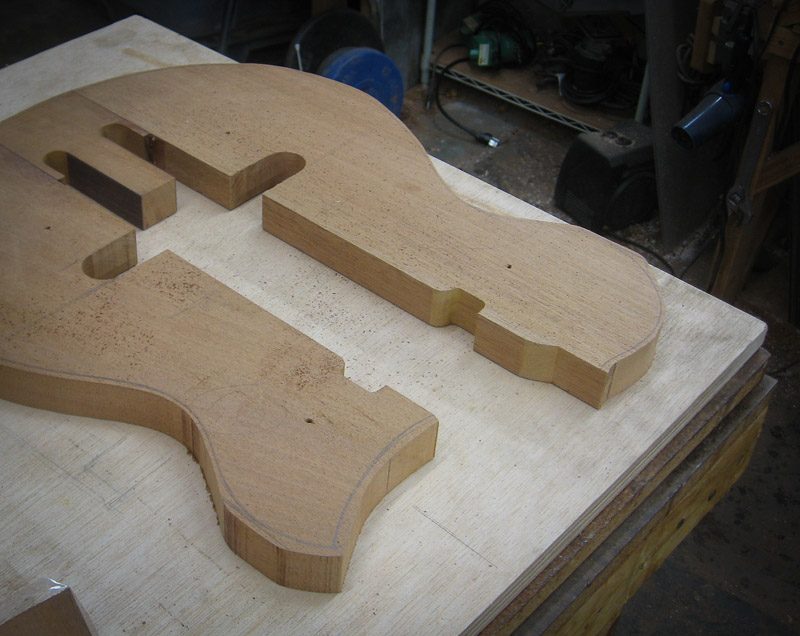



























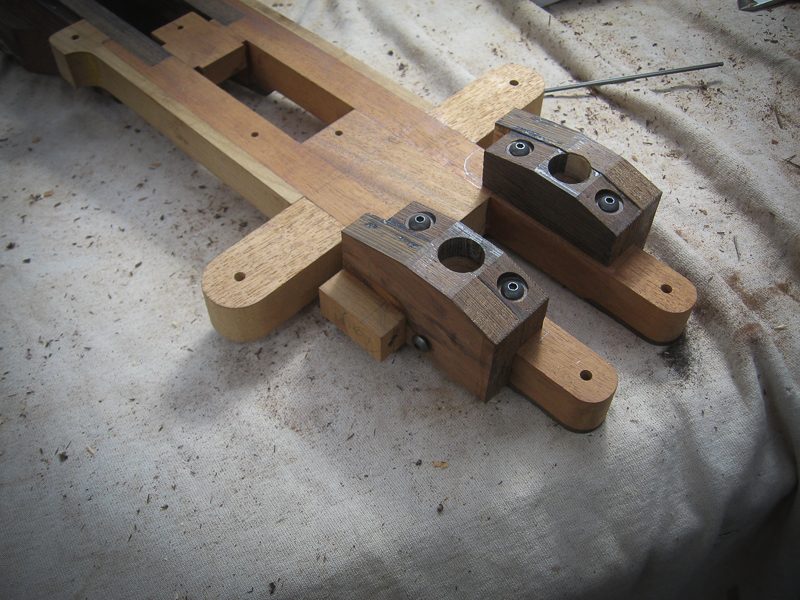






































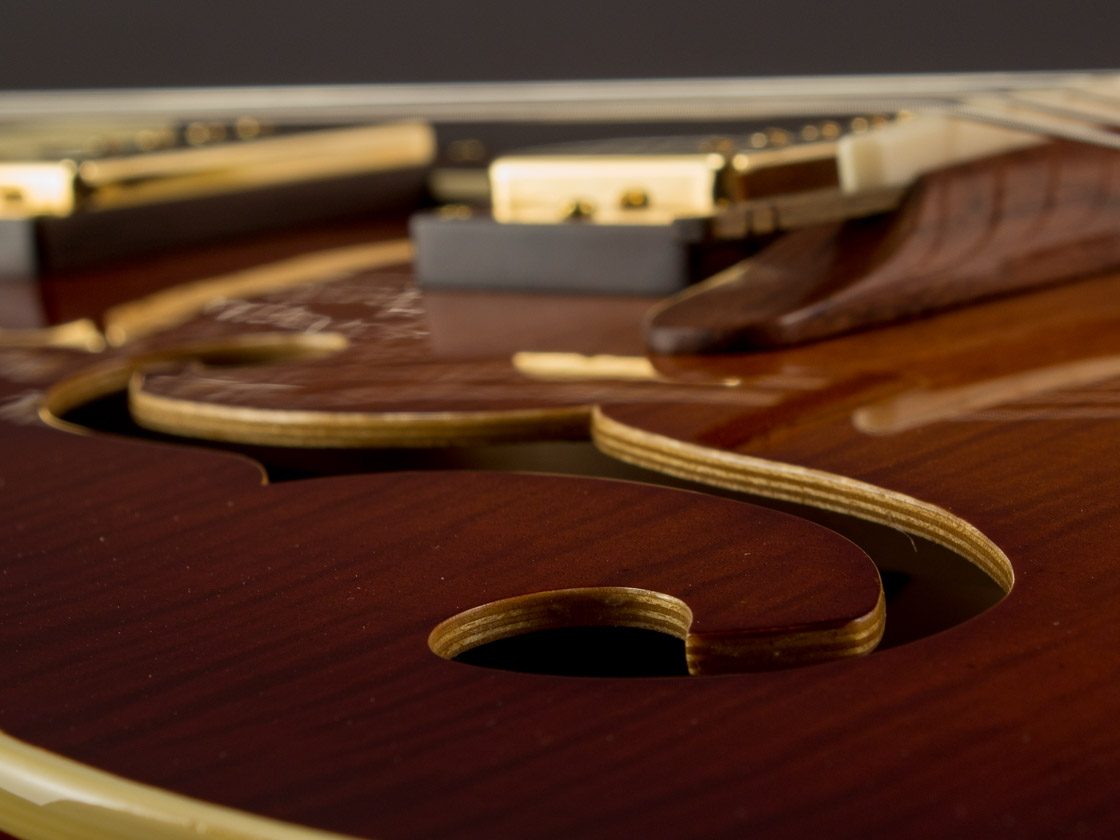
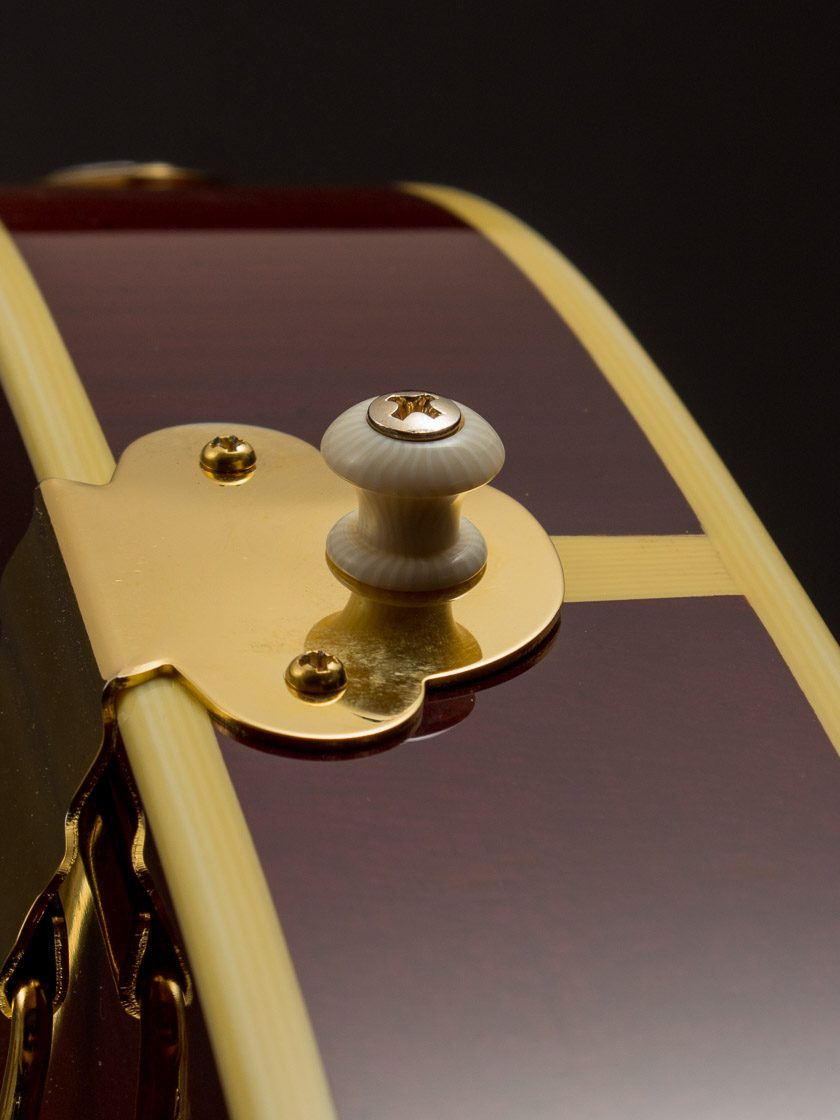
 GN: I am married and have two daughters, so they keep me busy. My new shop is in my home, so my family is a huge part of my life. I also have to admit that I’m a bit obsessed with Brazilian Jiu Jitsu. It was something that I picked up in Santa Cruz to relieve stress. I think most artists and musicians can be a little obsessive compulsive. It’s important to have a healthy outlet.
GN: I am married and have two daughters, so they keep me busy. My new shop is in my home, so my family is a huge part of my life. I also have to admit that I’m a bit obsessed with Brazilian Jiu Jitsu. It was something that I picked up in Santa Cruz to relieve stress. I think most artists and musicians can be a little obsessive compulsive. It’s important to have a healthy outlet.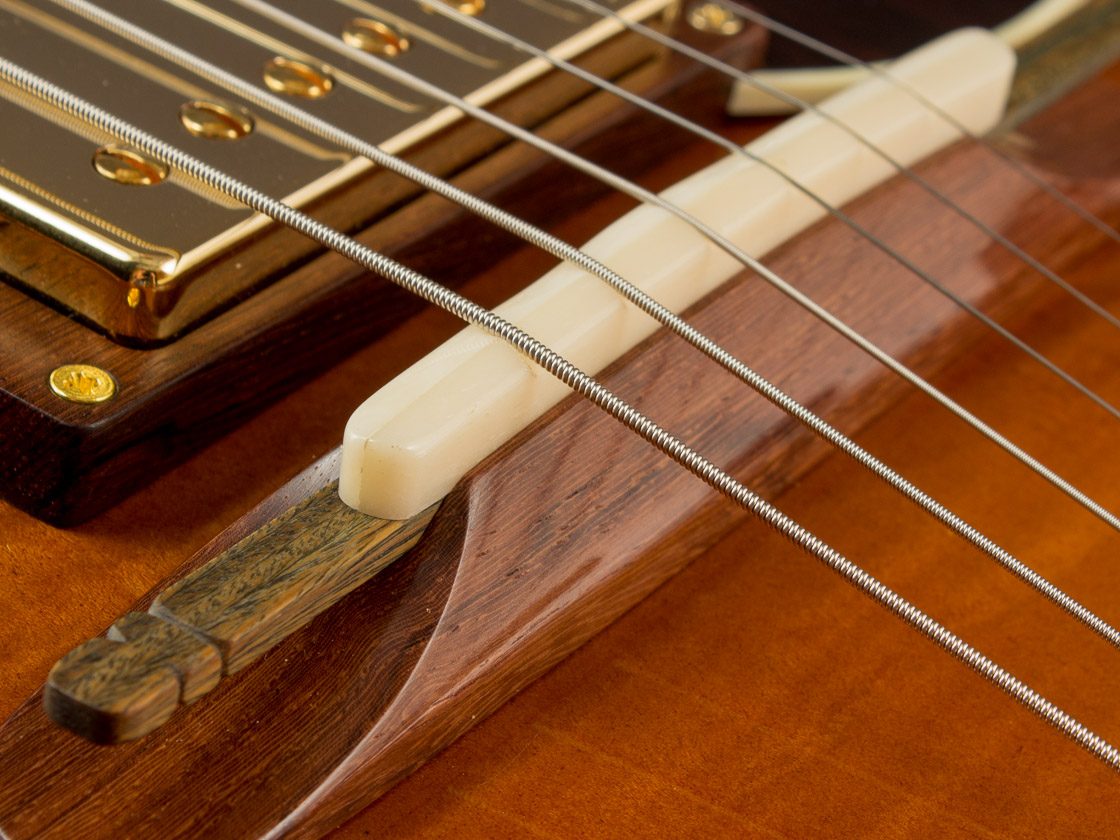 GN: The Marcus King Band, I think they may be from your neck of the woods. Great guitar playing, solid band. I always have blues playing in the shop. I’ve been on a Hound Dog Taylor kick this week. I’ve been teaching my daughters how to play slide guitar. My seven year old plays a killer slide version of Beat on the Brat by The Ramones.
GN: The Marcus King Band, I think they may be from your neck of the woods. Great guitar playing, solid band. I always have blues playing in the shop. I’ve been on a Hound Dog Taylor kick this week. I’ve been teaching my daughters how to play slide guitar. My seven year old plays a killer slide version of Beat on the Brat by The Ramones.



 CF: As a luthier working alone, I think it’s difficult not to experiment. When voicing an instrument I try to think about who will be playing it and how they play. It is great to think that you can build an instrument as light as possible but in the hands of certain musicians they will destroy something like that within months. If I am working with someone who is into playing with a light touch, I will make the instrument as light as possible.
CF: As a luthier working alone, I think it’s difficult not to experiment. When voicing an instrument I try to think about who will be playing it and how they play. It is great to think that you can build an instrument as light as possible but in the hands of certain musicians they will destroy something like that within months. If I am working with someone who is into playing with a light touch, I will make the instrument as light as possible.
 LW: What music are you listening to right now?
LW: What music are you listening to right now?











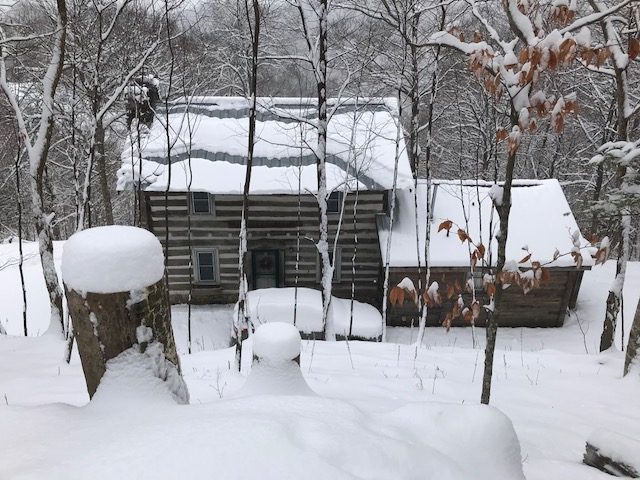 I’m now living my first winter in my Civil War log cabin heated primarily by a wood stove in the mountains of western North Carolina. I absolutely embrace living this way and enjoy the peace and serenity. The atmosphere here is perfect for making music, and I’m playing more than I have since I was a teenager. However, the dryness of winter and the wood stove have made it impossible for me to keep my guitars hanging on the wall; even with three “whole house“ humidifiers running. Feeding them 12 gallons of water a day, I cannot get the cabin to stay above 20%. This comes as no surprise to me as for years I’ve repaired cracks in the guitars of people that heat with wood, and forced hot air is just as bad. I have had to begrudgingly resort to keeping my instruments in their cases this winter, where they can be protected by D’Addario Humidipaks. These wonderful inventions originally come to us from NASA. They maintain a consistent 45% humidity by either emitting or absorbing moisture. That said, I really don’t like having my instruments hiding their cases. Here’s why.
I’m now living my first winter in my Civil War log cabin heated primarily by a wood stove in the mountains of western North Carolina. I absolutely embrace living this way and enjoy the peace and serenity. The atmosphere here is perfect for making music, and I’m playing more than I have since I was a teenager. However, the dryness of winter and the wood stove have made it impossible for me to keep my guitars hanging on the wall; even with three “whole house“ humidifiers running. Feeding them 12 gallons of water a day, I cannot get the cabin to stay above 20%. This comes as no surprise to me as for years I’ve repaired cracks in the guitars of people that heat with wood, and forced hot air is just as bad. I have had to begrudgingly resort to keeping my instruments in their cases this winter, where they can be protected by D’Addario Humidipaks. These wonderful inventions originally come to us from NASA. They maintain a consistent 45% humidity by either emitting or absorbing moisture. That said, I really don’t like having my instruments hiding their cases. Here’s why.

